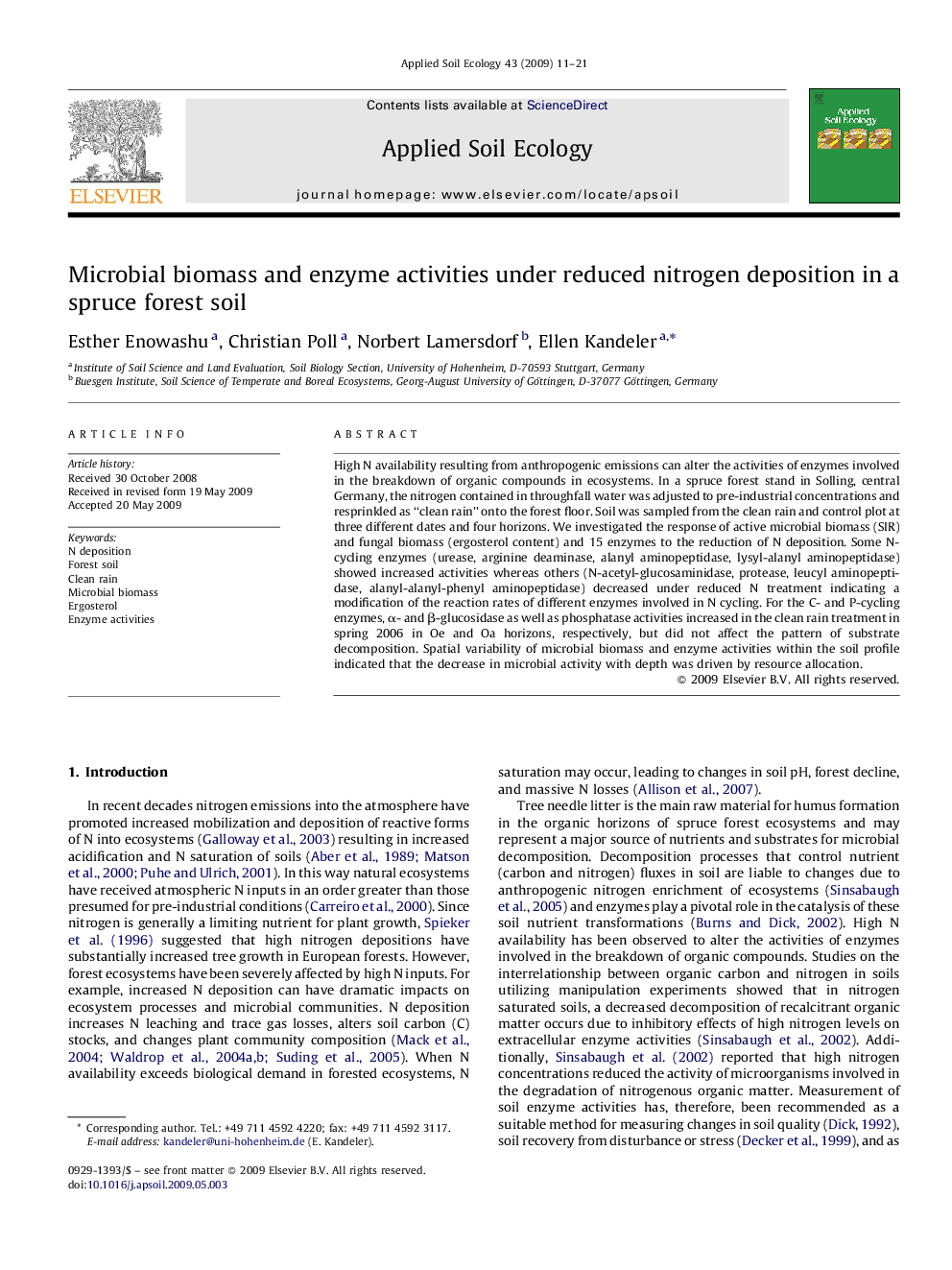| Article ID | Journal | Published Year | Pages | File Type |
|---|---|---|---|---|
| 4382977 | Applied Soil Ecology | 2009 | 11 Pages |
High N availability resulting from anthropogenic emissions can alter the activities of enzymes involved in the breakdown of organic compounds in ecosystems. In a spruce forest stand in Solling, central Germany, the nitrogen contained in throughfall water was adjusted to pre-industrial concentrations and resprinkled as “clean rain” onto the forest floor. Soil was sampled from the clean rain and control plot at three different dates and four horizons. We investigated the response of active microbial biomass (SIR) and fungal biomass (ergosterol content) and 15 enzymes to the reduction of N deposition. Some N-cycling enzymes (urease, arginine deaminase, alanyl aminopeptidase, lysyl-alanyl aminopeptidase) showed increased activities whereas others (N-acetyl-glucosaminidase, protease, leucyl aminopeptidase, alanyl-alanyl-phenyl aminopeptidase) decreased under reduced N treatment indicating a modification of the reaction rates of different enzymes involved in N cycling. For the C- and P-cycling enzymes, α- and β-glucosidase as well as phosphatase activities increased in the clean rain treatment in spring 2006 in Oe and Oa horizons, respectively, but did not affect the pattern of substrate decomposition. Spatial variability of microbial biomass and enzyme activities within the soil profile indicated that the decrease in microbial activity with depth was driven by resource allocation.
